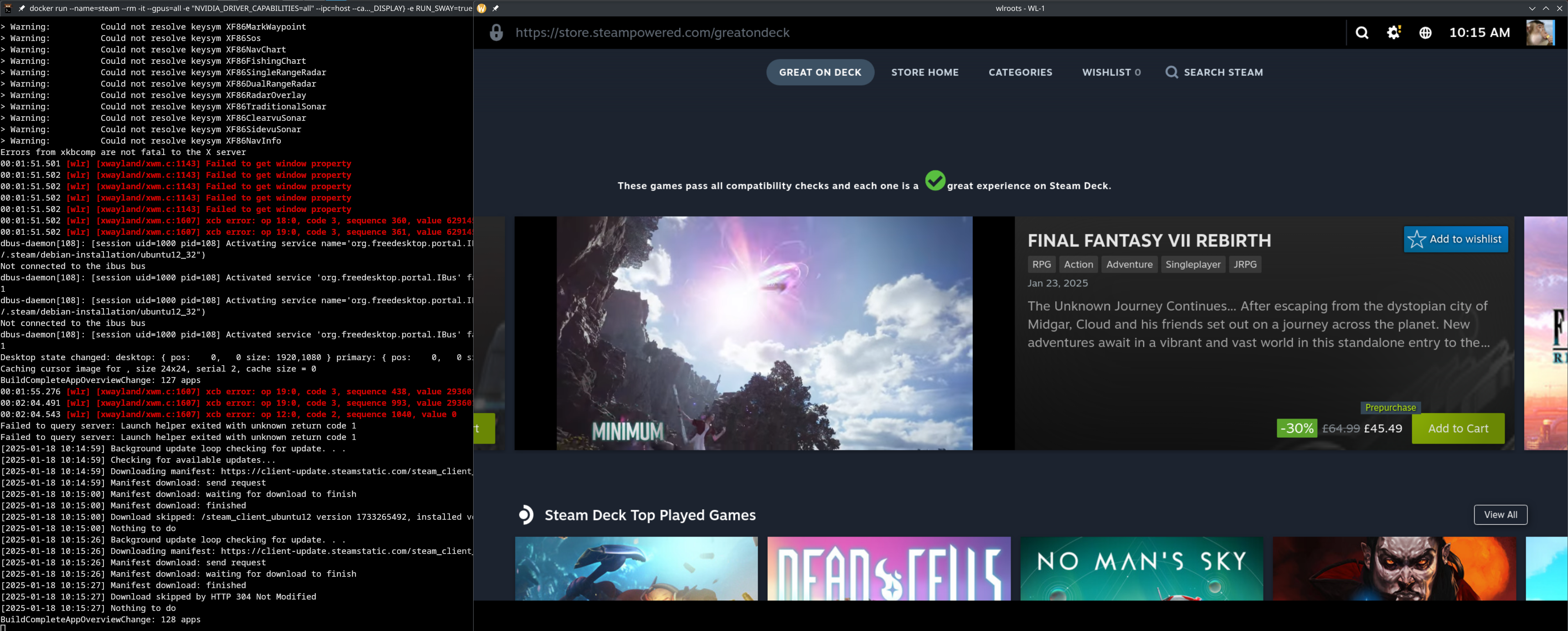Apps
Overview
Wolf will start different Docker containers that are preconfigured for different apps such as Steam, Pegasus or Firefox. Once the container is launched, Wolf streams the output to the connected Moonlight client.
Currently, when opening and closing the app through Moonlight, the app container will be deleted. Therefore, all data except for the mounted paths will be deleted, which ensures application consistency to some extent. However, if modifications to the container are needed, such as installing additional software, the best approach is to create a custom app image. Wolf uses the same app image as in the GoW project. Therefore, you can refer to this link for customizing app content.
See each subpage for further details and additional configuration steps.
Build your own
If you want to build your own app, you can use the following template:
-
Clone the GOW repo
git clone https://github.com/games-on-whales/gow.git-
All the published images are in the
images/directory. You can edit any of the images or create a new one.
Example: edit an already existing image
For example, say that you want to add another emulator to ES-DE:
-
Edit the
images/es-de/Dockerfilefile and add the necessary software. -
Build the image: open a shell in the root of the GOW repo, then use Docker to build with the following command:
gow/es-de:custom.docker build -t gow/es-de:custom --build-arg BASE_APP_IMAGE=ghcr.io/games-on-whales/base-app:edge images/es-de .-
Finally, update the
config.tomlfile in Wolf to use the new image. Just change theimagefield under[apps.runner]to the newly locally builtgow/es-de:custom. -
Don’t forget to contribute back by creating a pull request in games-on-whales/gow!
I want to edit something in base or base-app
Our builds are hierarchical: all images are based on base-app which is based on base.
You can build them with:
docker build -t gow/base images/base .
docker build -t gow/base-app --build-arg BASE_IMAGE=gow/base images/base-app .Testing out an image locally
If you have a desktop environment running on your host, you can run the built image without even using Wolf.
Here’s an example of running Steam inside Docker on a Wayland host without installing anything else on your host:
docker run --name=steam --rm -it \
--device=/dev/dri/renderD128 \
--device=/dev/dri/card0 \
--ipc=host \
--cap-add=ALL \
--security-opt seccomp=unconfined \
-e XDG_RUNTIME_DIR=/tmp \
-v ${XDG_RUNTIME_DIR}/${WAYLAND_DISPLAY}:/tmp/${WAYLAND_DISPLAY}:rw \
-e XDG_SESSION_TYPE=wayland \
-e WAYLAND_DISPLAY=${WAYLAND_DISPLAY} \
-e RUN_SWAY=true \
-v /tmp/SteamGOWData:/home/retro/ \
ghcr.io/games-on-whales/steam:edge
Depending on your host setup, you might need to adjust this command.
For example, for Nvidia users with the container toolkit installed you might need to add --gpus=all instead of --device=/dev/dri/renderD128 --device=/dev/dri/card0 and -e NVIDIA_DRIVER_CAPABILITIES=all to the environment variables.
In the command above /tmp/SteamGOWData in your host is where the home folder (containing Steam client and settings in this example) will be stored, make sure to adjust that to your liking.